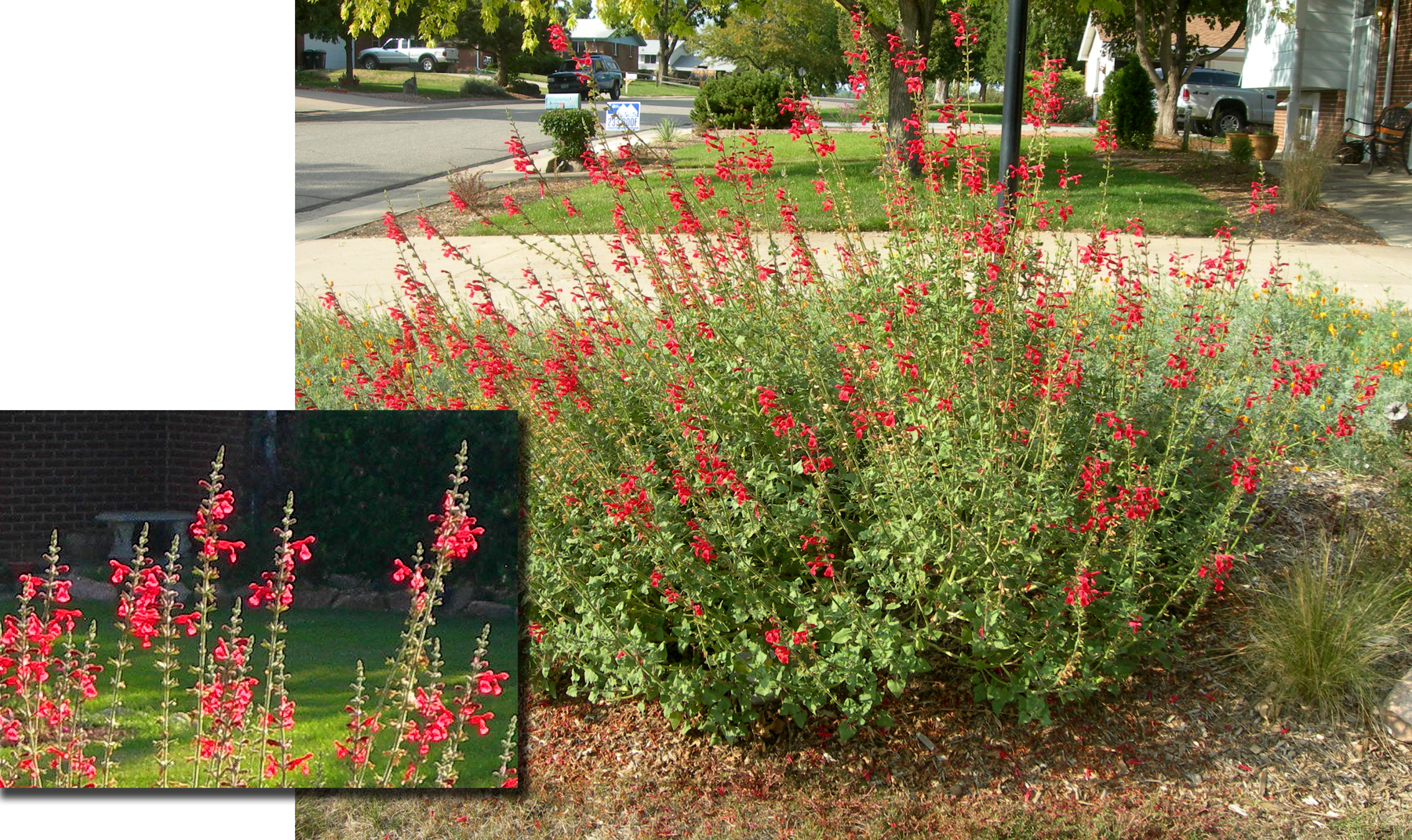by Matt Corrion

Vermilion Bluffs Mexican Sage is a large-sized flowering perennial that is a real attention-grabber. I have found this plant to be an excellent choice for dry, southern exposures and Xeriscapes. It is fairly easy to grow, and produces bright-red flowers throughout the summer. Hummingbirds love this plant- it is not uncommon to see 4 or 5 of them at a time on a single plant.
PLANT STATS
Scientific Name: Salvia darcyi ‘Pscarl’
Plant Type: Perennial
Mature Height: 36-48″
Mature Spread: 30-42″
Water Requirement: Low
Exposure: Full Sun to partial shade- best in full sun.
Best Features: Intense cardinal red flowers that hummingbirds love.
Flowers: Bright cardinal red tubular flowers from July through October.
Winter Interest: Minimal
Disadvantages: Does not perform well in poorly drained soils. Late to emerge in spring.
Availability and Sizes: This plant was introduced in 2007, but is already available through most retail and wholesale nurseries. Commonly available in 1 gallon size, or in flats of smaller pots. I would recommend the 1 gallon size.
Maintenance Tip: Mulch heavily over the winter to protect from hard freezes.
Other: Leaves and stems are very aromatic. Salvia darcyi was originally collected in the Sierra Madre Oriental in Mexico. Named to Plant Select in 2007.
This is the official blog of Outdoor Design Group, Colorado Landscape Architects. For more information about our business and our services, click here.
Related Posts:
by Matt Corrion
Here are excerpts from an interesting article from USA Today (Larry Olmstead), on the trend of specialized themed communities, including several located in Colorado and the west:
Themed communities now are targeted at hunters and anglers, cyclists and equestrians, pilots and gardeners, even oenophiles. “Developments are becoming more specialized,” says Orlando real estate broker Scott Kauffman of Golfcoursebusiness.com, an expert on master planned communities. “People have different passions.” (more…)
Related Posts:
by Matt Corrion
As the cold temperatures arrive across much of the country, irrigation systems should be winterized to avoid damage.
Whether you are a commercial property owner/manager that is overseeing maintenance, or a do-it-yourself homeowner, you should know the basics of the winterization process. Here is a link to a good article from John Deere Landscapes that summarizes the winterization process nicely. The author is from Michigan, but the process is the pretty much the same for any place that has freezing temperatures.
Is it necessary to winterize? Some people choose to simply turn off the water and take their chances- I have talked to many people who have done just that without incurring any damage to their systems. Here in Colorado, we often have sunny warm days throughout the winter. However, we usually have at least a few days of zero-to-negative degree temperatures- and freezing temperatures can damage an irrigation system that has not been properly winterized. Bottom line: If you have invested a lot of care and money into your own irrigation system (or, you are providing maintenance for someone else’s) then it is well worth the small expense and effort to properly winterize.
This is the official blog of Outdoor Design Group, Colorado Landscape Architects. For more information about our business and our services, click here.
Related Posts:
